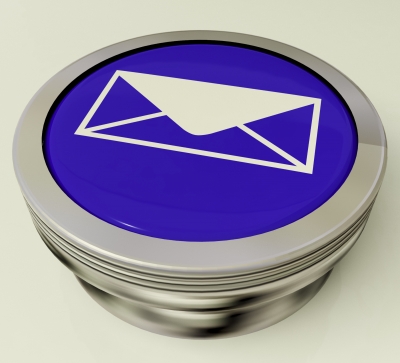Get WISER with Your AI Prompts - A guide for sales managers
Everyone’s wittering on about AI like it’s the second coming. But here’s the rub: if you give it half-baked prompts, you’ll get half-baked answers....
2 min read
Sarah Pern 05/10/2012 10:33:00 AM

 With 81% of marketers using email marketing as a lead generation tactic (MarketingSherpa), it's easy to see how important it is to make sure you're doing it right.
With 81% of marketers using email marketing as a lead generation tactic (MarketingSherpa), it's easy to see how important it is to make sure you're doing it right.
But what does "success" look like for an email campaign? And how can B2B marketers prove it in the Boardroom to combat the dim view CEOs already have of marketers?
Here are 5 key factors that we think define a successful B2B email marketing campaign:
Identifying and targeting your buyer personas directly affects the quality of your leads. Buyer personas for your business offering should be carefully identified and considered throughout your email marketing campaigns. In particular, understanding the issues your buyers face and communicating with them about these specific issues can dramatically increase conversion rates. From the initial stages of attracting the right traffic, to creating your lead nurturing campaign, your buyer personas and their issues need to be at the crux of every stage of your email marketing.
Segmenting and targeting your email campaign can significantly increase ROI. Different segments may benefit from different approaches in the lead nurturing stages of your campaign. For example, someone who is in the early stages of the decision making process may not appreciate an email every week. Whereas someone further along that cycle will find this helpful. Segmenting your email lists allows you to create targeted and more effective campaigns. The sign-up process is an excellent time to have people indicate the information you need to do this.
Another benefit of segmenting your email lists is the ability to create more targeted and effective content for each segment. This involves personalising the email to resonate with the target buyer persona, stage of cycle or whichever metric you have chosen to segment the list. Relevant use of email text, images and the call to action has proven to significantly help move customers through their decision making stages. For example, a potential customer looking to make a purchase in the next month requires a more direct approach than a lead casually browsing their options looking to make a purchase in the next 3-6 months. Know what purpose your email campaign serves in moving your buyer persona through the stages in their buying journey.
Although email click through rates and open rates provide some insight, a more effective approach is in looking at the bigger picture by using metrics tied to the 'bottom line'. For example:
• Number of leads generated from email
• Revenue per email
• ROI (ie. cost divided by revenue) per email
• Amount of registrations per email
• Total number of sales per email
These metrics offer 'bottom line' insights allowing for optimisation of campaigns and maximisation of ROI. Measuring email performance in relation to leads and sales provides much more succinct and relevant data than click through rates and open rates.
How often do you create test variations for your email campaigns? A minor tweak can significantly improve your traffic, leads, and even sales if done right. This is a "no brainer". Your industry peers are testing the following email elements to improve conversion rates, are you?

If you're not taking advantage of some of these simple tweaks you can make to every email in your campaigns, you will be reducing your conversion rates and therefore missing out on leads.
Subscribe to our latest news and updates on HubSpot.

Everyone’s wittering on about AI like it’s the second coming. But here’s the rub: if you give it half-baked prompts, you’ll get half-baked answers....

The business world is falling head over heels for AI—and who can blame it? With promises to reduce grunt work, uncover insights, and turbocharge...

Search is evolving - fast. For two decades, SEO has revolved around Google’s algorithm: keywords, backlinks, metadata, and page speed. But with the...